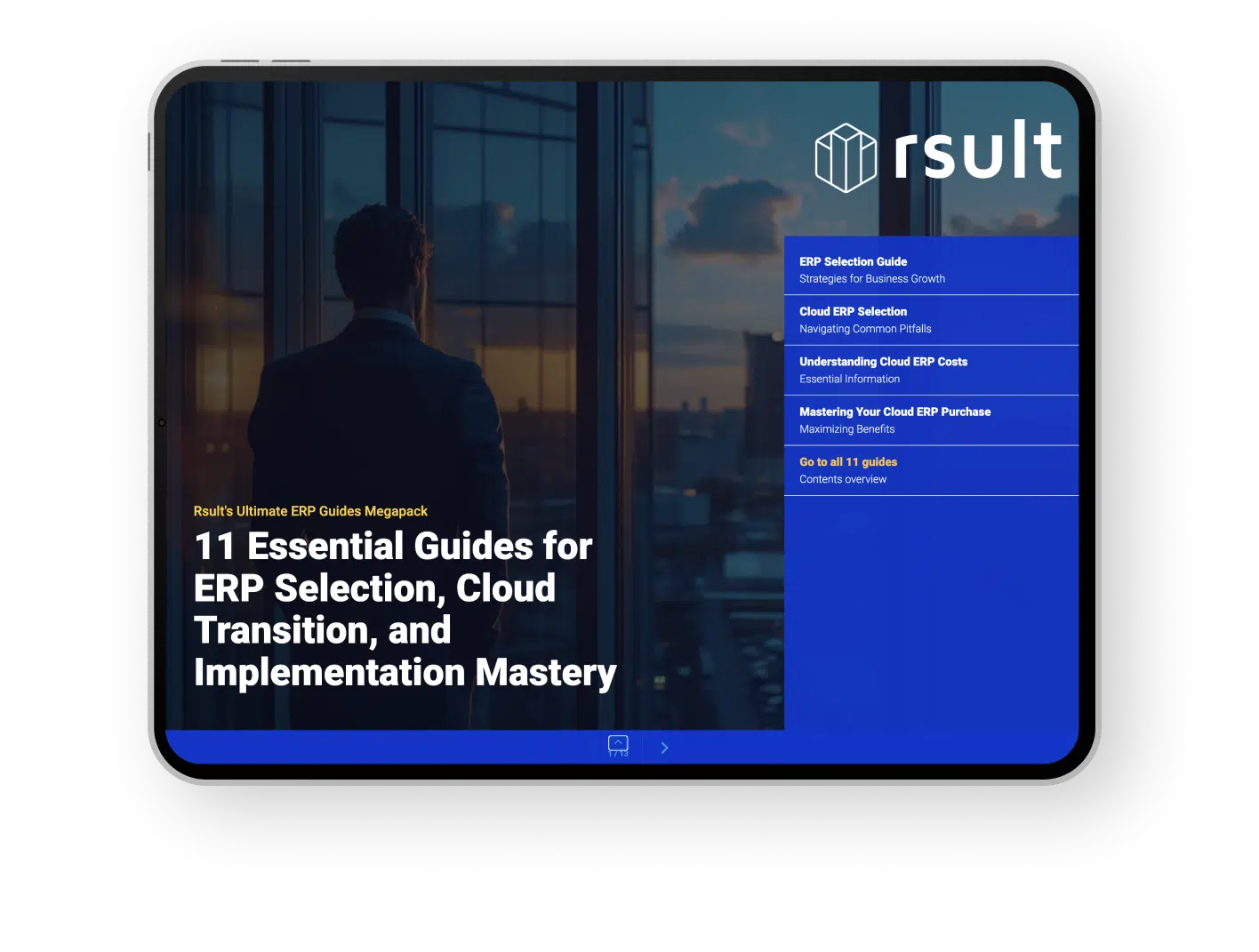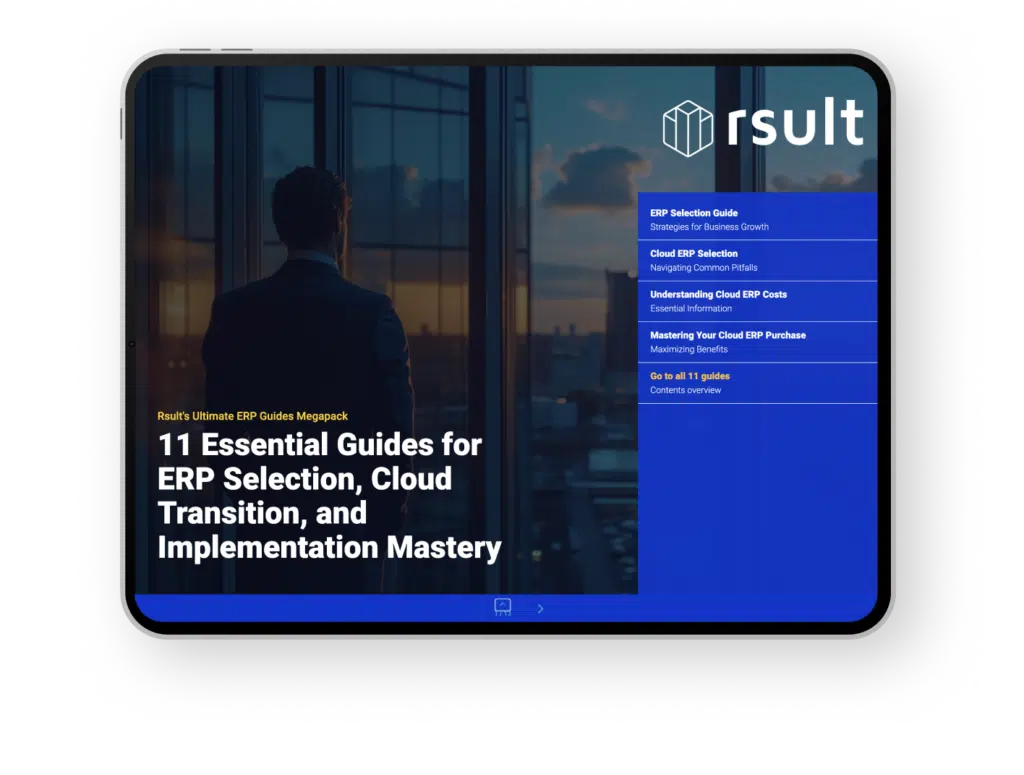The complexities of modern businesses have led to the necessity for agile and comprehensive enterprise resource planning (ERP) implementations. With each successful ERP implementation cascading into business efficiency and growth, it’s critical to address the multifaceted challenges involved in managing ERP solutions. Mastering ERP implementation best practices can mean the difference between a transformative solution and a costly misstep. As such, effective management of multiple ERP systems should be driven by strategic planning, precise coordination, and a robust understanding of the tools at your company’s disposal.
Key Takeaways
- Recognize the strategic impact of a successful ERP implementation on your business.
- Utilize ERP implementation best practices to streamline the process.
- Ensure meticulous planning and management of ERP solutions for optimal results.
- Emphasize the importance of choosing the right ERP system to meet your specific needs.
- Appreciate the necessity of committing resources and attention to achieve meaningful enterprise resource planning implementation.
Understanding the Strategic Value of ERP Systems
At the heart of modern business operations lies the ERP system—a dynamic framework designed to streamline business activities and foster strategic growth. An ERP system deployment is not just the installation of new software; it’s a strategic move towards comprehensive finance management and the first step in achieving supply chain optimization. ERP solutions are the keystones in a company’s infrastructure, offering unparalleled support in processing voluminous data and providing real-time insights into financial health.
Enhancing Finance and Supply Chain Structures
For businesses to thrive in the competitive marketplace, strengthening finance and supply chain frameworks is imperative. An ERP system serves as the backbone for these structures, delivering high accuracy in financial tracking, and providing a centralized platform for monitoring the supply chain. By ensuring that both finance management and supply chain systems work synergistically, companies can create a resilient structure primed for strategic growth through ERP.
Fostering Business Growth Through Integration
Integration is at the core of ERP system deployment, binding various business processes into a unified whole. As companies expand, the complexity of operations increases, making the role of a cohesive ERP system indispensable. Through intelligent data management and process alignment, ERP systems encourage sustained business growth by providing a clear view of opportunities and forecasting potential challenges. Ultimately, the integration afforded by an ERP system is a catalyst for business evolution, empowering organizations to scale up and adapt to market demands with agility.
- Centralized finance control for better decision-making
- Streamlined information flow across the organization
- Advanced analytics fostering proactive business strategies
- Scalable processes to meet growth requirements
By understanding and leveraging the strategic value inherent in ERP systems, companies can unlock new levels of efficiency and profitability. The deployment of these systems is a considered choice in the pursuit of excellence in finance management and the optimization of the supply chain—the very engines driving business success.
Navigating the ERP Implementation Landscape
Embarking on an ERP software implementation journey requires rigorous planning and an understanding of the best practices to ensure success. By effectively navigating the ERP process, businesses can avoid common pitfalls and enhance their chances of a smooth transition. A well-thought-out ERP deployment strategy is not only a roadmap but also a compass that guides every stage of this complex voyage.
Adopting these best practices requires an intricate balance between technology and business needs. Delve into the following critical actions:
- Establish a clear business justification with measurable objectives.
- Define the business processes that will be affected and map out necessary improvements.
- Assess the internal capabilities and determine if external expertise is needed.
The selection of the right tools and partnerships during the implementation phase is paramount. In aid of that, comprehending the scope and requirements can be visualized in the table below:
| ERP Implementation Phase | Focus Area | Tools/Strategies Required |
|---|---|---|
| Pre-Implementation | Project Scope & Objectives | Business Case, ROI Analysis |
| Implementation | Process Mapping & Optimization | Change Management Tools |
| Post-Implementation | Performance Measurement | KPI Dashboards, Continuous Improvement Plan |
Furthermore, preparing the team for the change and fostering an adaptive corporate culture is essential. Implementing ERP software is not simply about integrating new technology—it’s about reinventing processes and workflows for enhanced efficiency and productivity. A successful ERP deployment is thereby measured not only by the software’s technical performance but also by how well it aligns with business goals and facilitates their achievement.
To conclude, while navigating the ERP implementation terrain can be complex, with the right approach and adherence to best practices, businesses can effectively deploy ERP systems that deliver significant value and driving force in achieving strategic goals.
Essential ERP Software Selection Criteria
When embarking on the journey of selecting the right ERP software, businesses face a crucial decision: should they opt for a cloud-based system or an on-premises solution? This choice can have profound implications on ERP integration solutions, directly affecting ERP budgeting and ERP resource allocation. Several key factors must be considered to ensure the selected ERP software meets the unique needs of the business, fostering agility, security, and scalability.
Evaluating Cloud-based vs On-premises Solutions
Deciding between cloud-based ERP and on-premises ERP solutions requires a deep understanding of the respective advantages and potential constraints. Cloud-based ERP solutions boast benefits such as lower upfront costs, ease of access, and automatic updates. Conversely, on-premises solutions are preferred by organizations seeking full control over their data and systems. Yet, such control comes with greater responsibility for maintenance and might necessitate a more significant investment in IT resources.
Budgeting and Resource Allocation for ERP Software
ERP budgeting is a critical step in selecting a system. A realistic budget must account for all costs involved, including software licensing, implementation services, hardware upgrades, and ongoing support. ERP resource allocation goes hand in hand with budgeting, as it entails assigning financial and human resources efficiently to maximize the value from the ERP investment.
| Criteria | Cloud-based ERP | On-premises ERP |
|---|---|---|
| Initial Cost | Lower | Higher |
| Maintenance | Vendor Responsibility | Client Responsibility |
| Flexibility | High – Scalable and Updatable | Customizable at Cost |
| Data Control | Dependent on Provider | Full Control |
| Accessibility | Anywhere with Internet | Limited to On-site |
Developing a Business Case for ERP Deployment
The path to a successful ERP implementation process starts with a strategic framework centered around a well-constructed business case. Such development serves as the cornerstone for ROI of ERP systems, fascinating stakeholders with its foresight and its alignment with corporate objectives. By integrating operations analysis with business case development, decision-makers can draw a roadmap for a transformative journey that’s both prudent and purposeful.
Defining Business Goals and Expected ROI
A meticulously formulated business case must first outline the enterprise’s objectives. The goals should include an enhanced ERP implementation process that guarantees heightened efficiency. An expected ROI of ERP is pivotal as it justifies the investment by outlining the potential financial gains and cost savings, such as those resulting from process automation and refined inventory management protocols.
Analyzing Current Operations and Future Needs
Operations analysis plays a critical role as it assesses the current state of business processes against the anticipated needs of an evolving market landscape. Rigorous scrutiny of existing workflows against these future projections ensures the selected ERP system is not just a fix for today but a sustainable solution for tomorrow.
| Business Objective | Current State | Future Needs | ERP Impact |
|---|---|---|---|
| Process Automation | Manual, time-intensive tasks | Streamlined, efficient processes | Reduction in process cycle time |
| End-User Adoption | Low user engagement with legacy systems | High user proficiency and system utilization | Increased productivity and system value perception |
| Inventory Visibility | Inconsistent data tracking | Real-time inventory analysis | Improved decision-making capabilities |
In this table, each dimension of the business case points to a pertinent aspect of the ERP implementation process that aligns operational realities with future requirements, ultimately shaping the architecture of an ERP system that delivers value and drives enterprise advancement.
ERP Implementations: Charting the Process
Successfully navigating the complexities of ERP implementation hinges on a well-defined ERP process outline, which is an indispensable roadmap for businesses aiming to modernize their operations. While the ERP implementation stages may seem daunting, charting ERP deployment thoroughly can significantly streamline the process. Each phase is critical, beginning with devising a strategic budget and conducting an in-depth business analysis, moving onto the meticulous selection and installation of the ERP system, followed by configuration and rigorous testing, and culminating with robust post-live support.
Every stage in the ERP deployment journey is a stepping stone that builds upon the previous one, ensuring that the transformation is as seamless as possible. It begins with establishing a solid foundation through planning and budgeting, without which the risk of encountering severe hiccups later in the process significantly escalates. With a realistic budget and thorough analysis in place, organizations can confidently proceed to the ensuing steps.
- Establishing a budget: Allocating financial resources and predicting future expenditure sets a realistic framework for your ERP journey.
- Business analysis: A critical evaluation of your current processes and future requirements shapes the criteria for your ERP solution.
- System selection: Choosing an ERP system that aligns with your organizational needs and goals is paramount to a successful deployment.
- Installation: The technical undertaking of setting up the ERP system within your IT environment is foundational for further configuration.
- Configuration: Tailoring the ERP system to cater to your specific business processes is a meticulous stage requiring precision.
- Testing: Rigorous system testing ensures the ERP solution functions correctly and meets all predefined requirements.
- Deployment: The official switch-over to the new ERP system marks a significant milestone in the implementation stages.
- Post-live support: Continued support helps troubleshoot issues, provides further training, and helps refine system functionalities.
To mitigate the risks and ensure each stage is executed with due diligence, a chart indicating the progress and interconnected steps is often employed, serving as a visual and practical guide throughout the entire ERP deployment process. This proactive approach to ERP implementation guarantees that the intricate intricacies are managed efficiently, aligning with the organizational goals and delivering a successful transition.
Assembling an Effective ERP Project Team
An effective ERP project team is the cornerstone of any enterprise resource planning implementation. Assembling this team requires meticulous attention to outlining each member’s role within the team, ensuring that every aspect of the deployment is handled with expertise and precision. It is the cohesion and collaboration among these individuals that often determine the success of a complex ERP initiative.
Identifying Key Players and Defining Responsibilities
Defining team responsibilities starts with identifying the key members who will drive the ERP project. This involves selecting a balanced mix of internal leaders and experts who understand the nuances of their respective departments and how the ERP will enhance their functions. These individuals will form the operational backbone of the ERP project team, guiding the deployment efforts and making critical decisions that will impact the project’s outcome.
The ERP project team typically comprises roles such as a Project Manager, Business Analysts, ERP Developers, Quality Assurance testers, and Subject Matter Experts from various departments. Each role carries specific responsibilities that are fundamental to the project’s progression.
Promoting Collaboration and Commitment Among Stakeholders
Stakeholder collaboration extends beyond the immediate ERP project team. It includes the integration of insights and feedback from various cross-functional departments, which are crucial for the system’s alignment with broad organizational objectives. Leadership support, especially, is indispensable, as it imparts a vision, garners organizational buy-in, and facilitates resource allocation to keep the project on track.
It is also the responsibility of the ERP project team to maintain clear communication channels and uphold transparency throughout the ERP implementation journey. Engaging stakeholders through regular updates and involving them in key decision-making processes ensures sustained commitment and minimizes resistance to change.
| Team Role | Main Responsibilities | Expected Contribution |
|---|---|---|
| Project Manager | Oversee project execution, manage timelines and resources, and communicate with stakeholders. | Leadership and direction to keep the project aligned with business goals. |
| Business Analysts | Gather requirements, streamline business processes, and liaise between technical teams and users. | Insure the ERP system meets functional needs and drive process optimization. |
| ERP Developers | Configure and customize the ERP system according to specified requirements. | Technical expertise to adapt the ERP solution to organizational workflows. |
| Quality Assurance Testers | Conduct thorough testing of the ERP system to ensure its functionality and reliability. | Guarantee a high-quality, bug-free ERP solution prior to go-live. |
| Subject Matter Experts | Provide specialized knowledge of industry and organizational practices. | Valuable insights ensuring the ERP system accommodates unique business processes. |
By focusing on defining team responsibilities and promoting stakeholder collaboration, an ERP project team can pave the way for a smooth and effective ERP system implementation.
Breaking Down Business Process Reengineering
At its core, business process reengineering (BPR) represents an integral method in reshaping a business by streamlining operations for the seamless integration of new ERP systems. In striving for operational excellence, businesses engage in this transformative strategy to completely overhaul their procedures and adopt ERP best practices, achieving remarkable improvements in productivity and effectiveness.
Streamlining Operations for ERP Integration
One of the pillars of BPR is critically analyzing and familiarizing oneself with current workflows to identify bottlenecks or redundancies. By streamlining operations, organizations can effectively tailor their processes to align with an ERP structure, ultimately leading to a more agile and responsive system. This new level of operational fluidity not only facilitates smoother ERP integration but also paves the way for refined decision-making mechanisms.
Leveraging Best Practices for Process Efficiency
Embracing ERP best practices involves recognizing the importance of process standardization and continuous improvement after the initial rollout of the system. This aspect of BPR focuses on designing processes that can easily adapt to changing business models while ensuring scalability and minimizing disruption. It is through this lens that the true strategic potential of ERP can be harvested, driving long-term sustainable growth.
| Before BPR | After BPR | Impact on ERP Integration |
|---|---|---|
| Multiple Overlapping Systems | Unified ERP Platform | Centralized control and visibility |
| Inconsistent Data Handling | Standardized Data Practices | Improved data integrity and reliability |
| Rigid Departmental Procedures | Flexible, Inter-departmental Workflows | Enhanced collaboration and productivity |
| Manual, Time-Intensive Tasks | Automated Processes | Reduced operational costs and errors |
Data Integrity and Migration Strategies
When it comes to executing a flawless ERP data transition, the significance of data integrity strategies and ERP data migration cannot be overstated. Establishing a methodical approach to migrating data not only guards against data corruption but also ensures that the process aligns with the overall goals of the enterprise resource planning system. Balancing these two aspects is a critical aspect of a successful ERP data migration.
- Understand Your Data: Recognize the data that will be moved and verify that it adheres to quality standards.
- Data Cleaning: Cleanse the data before migration to remove inaccuracies and redundancies.
- Design a Data Migration Plan: Create a step-by-step approach that outlines every stage of the ERP data migration process.
- Test the Migration: Conduct thorough testing phases before, during, and after transferring data into the new ERP system.
Data management during an ERP deployment is a transformative process requiring meticulous attention to detail to maintain data integrity strategies. This attention to detail ensures pivotal company data is accurately translated from legacy systems to the new ERP platform. By doing so, businesses enhance the decision-making process, streamline the ERP data transition, and prevent cost overruns linked with substandard data handling.
The table below presents a snapshot of essential checklists items that businesses should consider during their ERP data transition efforts.
| Checklist Item | Description | Responsible Party |
|---|---|---|
| Data Quality Assessment | Review and ensure data meets quality benchmarks before migration. | Data Management Team |
| Secure Data Backups | Create secure copies of all data before any migration process begins. | IT Security Team |
| Migration Tools Selection | Choose appropriate tools that match the company’s ERP data migration needs. | ERP Implementation Partner |
| Monitoring and Evaluation | Continuously monitor the data during migration and evaluate its integrity post-transfer. | Quality Assurance Team |
Successfully implementing these methodologies not only facilitates smoother ERP data migration but also secures the integrity of enterprise data throughout the ERP data transition journey. Preparing and executing with precision is the key to achieving a migration process that supports the organization’s vision for growth and operational excellence.
Training and Change Management Imperatives
For organizations undergoing an organizational transition with ERP systems, the emphasis on direct and engaging ERP training and change management cannot be overstated. Providing detailed ERP training is crucial for fleshing out the multi-layered aspects of user adoption. Likewise, change management plays a key role in redefining the contours of modern business environments during an ERP initiation.
Fostering User Adoption Through Comprehensive Training
To ensure that stakeholders are aligned with the new technology, creating a comprehensive ERP training program is paramount. By developing tailored training materials and sessions, employees can become familiar with the functionalities of the new system, easing the adoption curve and setting the foundation for competent utilization.
- Customized training modules for different roles within the organization
- Interactive learning experiences to enhance engagement
- Continuous training opportunities post-implementation for ongoing learning
Managing Organizational Change for a Smooth Transition
Change management serves as the backbone for any successful ERP implementation, offering a strategic framework to support employees through this transition. It involves active communication, creating an environment of trust, and addressing concerns proactively to minimize resistance and maximize acceptance.
| Change Management Stage | Actions | Expected Outcome |
|---|---|---|
| Preparation | Assessment of change readiness, stakeholder analysis, communication planning | A clear understanding of the change impact and stakeholders prepared for transition |
| Managing Change | Implementation of communication plan, training, and support structures | Employees engage with change initiatives, start to adapt to new processes and tools |
| Reinforcement | Collection of feedback, monitoring of change adoption, and corrective actions | Long-term adoption of ERP system, with continuous improvement and buy-in from all users |
By embedding these crucial processes into your organizational fabric, your team will gradually embrace the new ERP system, ensuring that the organizational transition is not only successful but also sustainable in the long run.
Troubleshooting Common ERP Implementation Challenges
Enterprise Resource Planning (ERP) systems are transformative tools that can streamline operations across an organization. However, deploying such intricate systems can be fraught with technical and operational challenges. Mastering ERP troubleshooting and actively handling implementation challenges ensures that any disruptions are quickly addressed, maintaining the momentum towards achieving a smooth operational flow. Ultimately, this culminates in post-ERP go-live improvements, which are central to maintaining an agile and competitive business.
Proactive Problem-Solving for Technical Hurdles
Technical challenges during ERP implementations are a given, but they must be met with a proactive stance. ERP troubleshooting is a skilled task that requires a keen understanding of the software as well as the unique needs of the business. Addressing coding issues, integration setbacks, or unexpected system behavior before they escalate ensures that project timelines remain on target. This preemptive approach to handling implementation challenges is not just about quick fixes—it’s about identifying and mitigating risks to prevent future complications.
Ensuring Continuous Improvement Post-Go-live
After the thrill of going live with a new ERP system, the focus must shift to post-ERP go-live improvements. It’s essential to gather user feedback, analyze system performance, and iron out any operational wrinkles. These steps are indispensable in refining ERP processes and utilities, leading to meaningful enhancements in efficiency and productivity. Continuous improvement efforts demonstrate the organization’s commitment to not only achieve but surpass operational excellence.
| Challenge | Proactive Mitigation Techniques | Post-Go-Live Improvement Strategies |
|---|---|---|
| System Integration Issues | Employ robust testing scenarios; engage with experienced integration specialists | Review integrations regularly; update workflows to optimize system synergy |
| Data Accuracy Concerns | Implement data validation rules; conduct thorough data audits before migration | Establish ongoing data governance; schedule periodic data quality reviews |
| User Adoption Hurdles | Provide comprehensive training programs; involve users in the planning stage | Facilitate continued learning opportunities; create a feedback loop for enhancements |
| Customization Limitations | Clarify essential custom requirements; use agile methodology for nimble adaptations | Assess the impact of custom features; keep customizations aligned with business goals |
By prioritizing ERP troubleshooting, diligently handling implementation challenges, and focusing on post-ERP go-live improvements, businesses can ensure that their investment in an ERP system delivers the anticipated strategic advantages. The key lies in the continuous evaluation and refinement of the implemented ERP solutions, guaranteeing longevity and adaptability in an ever-evolving technological landscape.
Conclusion
At the heart of transforming businesses with technology, implementing ERP solutions effectively is akin to setting the foundations for a building that must stand the test of time. The steps we’ve discussed throughout this article are much more than a recipe for installation; they’re a blueprint for ongoing success in a competitive marketplace. Successful ERP deployments hinge on comprehensive planning, keen attention to detail, and a methodology that considers both the immediate impact and the long-term benefits of the system.
It’s about fostering a mindset where change is not just expected but embraced, where the growth of a company and the satisfaction of its customers are seen as two sides of the same coin. Whether it’s through fortifying finance management, optimizing the supply chain, or streamlining operations, ERP systems should be viewed as a catalyst for innovation and efficiency. In doing so, organizations are not just installing software; they are laying down the tracks for continued expansion and profitability. The ultimate goal is to achieve and maximize ERP implementation benefits that propel the business forward in more ways than one.
The narrative does not end post-deployment; rather, it evolves to include continuous improvement and adaptation. Remaining agile and responsive to the needs of the business ensures that the ERP solution is not just a tool, but a dynamic enabler of business goals and objectives. As we move forward in an era where enterprise resource planning is the linchpin of strategic operations, mastering these essential best practices is no longer optional, but a fundamental ingredient for lasting success and market leadership.






